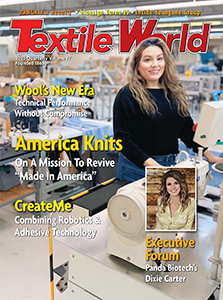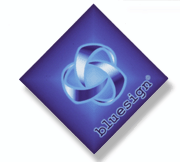
The Blue Revolution
bluesign® Technologies promotes eco-compatability throughout textile-processing supply
chain. A new revolution is underway in industry, and it is starting in the textile and
apparel sector. There is a difference, however, between this new revolution and the Industrial
Revolution that began in the 18th century and completely transformed production processes. That
earlier revolution also sped up the processes that have polluted the air and water, created toxic
substances that threaten human health, caused climate changes and depleted natural resources. The
new revolution aims to halt the progress of environmental degradation by using only those
materials, technologies and processes that cause no harm to the environment and result in products
that are safe in all aspects for consumption and use by humans. Blue Is For CleanThe
Industrial Revolution is often associated with the color black, suggesting coal, smoke, iron and
black gold. The revolution taking place today often associated with the color green, which
signifies the earth can also be linked to the color blue, which represents clean water and air, as
well as purity in general. Switzerland-based bluesign® Technologies AG, a new consortium dedicated
to promoting and facilitating environmentally sustainable, toxin-free textile production, is
currently involved in the research and development of new processes, technologies and components
for the manufacture of apparel.
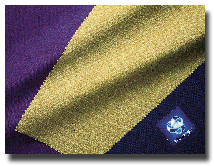
Consumers looking for apparel guaranteed to be free of toxic substances and produced without
causing environmental harm can look forward soon to a day when garment hang-tags will certify the
eco-compatibility and safety of garments that conform to the new bluesign Standard. At the same
time, comfort, design and functionality levels of these new products will not be compromised. Since
1997, bluesign has been working in partnership with a number of textile and textile-related
companies in efforts to develop and market new products. With regard to textiles, the consumer
wants a simple and clear orientation system he can trust, states Dr. Cornelia Voss, nutritionist
and head of the Textile Department, Wissenschaftsladen Bonn e.V. Zentrum fur burgernahen
Wissenstransfer, Germany. Credible concepts for the greatest possible freedom from toxins, safety
and transparency are also receiving the support of powerful consumer and environmental
associations.Of course, the move to improve and clean up production processes and develop
sustainable technologies and products has gained momentum in recent years, and, indeed, is mandated
by certain government policies and laws.
TI has reported on a number of other efforts to this end in the textile community
including efforts in the carpet industry and Cargill Dows development of synthetic fibers using
polylactic acid (PLA) from corn sugars. Among bluesigns objectives is the creation of a network
throughout the textile product supply chain of companies dedicated to using environmentally safe
and responsible methods and materials at each step in the manufacturing process. First
Products In The MarketplaceThe first products of bluesigns venture, made from synthetic fibers,
have recently been introduced to the marketplace. Switzerland-based Schoeller Textil, a company
known for its innovative performance fabrics, has produced a line of polyester fabrics made
entirely without the use of environmental toxins. This new production process lowers energy
consumption by 85 percent and water consumption by 75 percent.The new production process for these
fabrics requires less raw materials and eliminates toxic by-products, said Tom Weinbender,
president, Schoeller Textil USA, Seattle, Wash. The quality of these cutting-edge fabrics is not
compromised in any way, resulting in the same high standards that Schoeller customers expect.
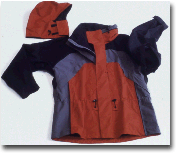
Schoellers new line includes a variety of fabrics, from soft and drapable microfiber fleece
knits to durable and rugged lightweight rip-stop weaves. In addition, the companys own Nano-Finish,
developed using nanotechnology applications in accordance with the bluesign Standard, provides
optional water- and soil-repellent attributes to the fabrics.Other development partners or
licensees in the bluesign system include Acordis, Ciba, 3M, Ems-Chemie, Eschler, Gortz KG
(Greenpeace products), KUAG, Nike, Prym, Rudolf Chemie, and Trevira.These partners are licensed by
bluesign to use its technologies, and their production processes are monitored to ensure that the
bluesign Standard will be maintained in products using the companys name. In turn, bluesign
reinvests the fees paid by these companies in new research. Licensees have access to bluesigns
entire body of knowledge; compatible components, processes and technologies; and engineering
services. The products are marketed by the labeling of bluesign® brands, company-brand
communication and distributor support.Leaders in science, environmental policy, industry, and
environmental and consumer organizations are monitoring bluesigns work. Research institutes
associated with the system include ETH Zurich, Tex-a-Tec and oko-Institut Freiburg. In addition,
bluesign is in a technology partnership with the Steilmann Group to develop new polyester textiles
that comply with its standards. What’s Blue And What’s Blackbluesign has placed products,
substances and technologies into three categories, according to their degree of compliance with its
standards. The bluesign standards exceed those set forth in oko-Tex Standard 100, the European
standard established in 1992 for the environmentally responsible production of textiles.The
bluelist includes products, substances and technologies that make the entire production chain as
toxin-free as possible and demonstrate totally environment-compatible behavior from raw materials
processing (including fiber and dyestuff manufacture) through fabric finishing and garment
manufacture. The list also embraces consumption and disposal methods. It includes:single-sort
materials that are easily reduced to their raw materials and are recyclable in raw-material form
(e.g., polyester into terephthalic acid and glycol);innovative technologies, such as
nanotechnology;the use of sustainable raw materials, such as cornstarch;catalyst systems that
comply with the bluesign standards;disposal methods that allow bio-compatible materials to break
down aerobically or anaerobically; anddisposal methods by which non-bio-compatible materials are
mineralized into carbon dioxide and water, so that their residues are bio-compatible.Next in rank
is the greylist of Best Available Technologies (BAT), comprising products and technologies that are
the best currently available. They are being used in the interim, but they will be improved upon as
better technologies become available, and once deemed eligible, they will be transferred to the
bluelist.Last is the blacklist of hazardous substances and technologies. These items will never be
used in the manufacture of bluesign-licensed products. The blacklist includes any substances that
have potential carcinogenic, mutational or adverse reproductive effects; that accumulate in water
or living organisms; or that have toxic or hormonal effects on living organisms. Included on this
list are antimony, mercury compounds, polycyclic aromatic hydrocarbons (PAH), tributyl tin (TBT)
and chlorine bleaching, among other items. Ecology And High-Tech Go Hand-In-HandEco-efficiency
is defined by bluesign as the relationship between the overall expenditure of nature and the
specific benefit per project or service unit. As Peter Waeber, CEO, explains: Ecology and high-tech
are not opposites. On the contrary, we can only observe our responsibility to living and future
generations by using the most modern technology. Ecological is no longer synonymous with hand-knit
We will be able to treat sustainable raw materials such as corn starch so that they display the
functions of modern chemical fibers and can be returned to the natural cycle at the end of their
useful lives.Another example of the ecology/ high-tech connection is the use of nanotechnology to
develop new textile-finishing processes that can imbue fabrics with various properties, including
dirt- and water-repellency, by changing the molecular structure of the fibers. Fabrics having dirt-
and water-repellent properties behave in the same way as a lotus leaf, which repels dirt and water
due to its rough, scale-like surface. The use of nanotechnology to create these properties in
fabrics eliminates the need to use halogenated compounds to achieve the same effects.Driving home
the importance of implementing eco-efficient practices is the fact that normal industrial
production creates 30 tons of waste for every one ton of finished product.
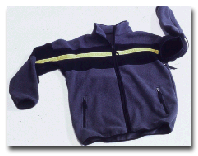
The products of nature are not necessarily excluded from bluesigns efforts to develop new
eco-friendly products, although the consortium is concentrating on improving production of
synthetics because, in general, their manufacture generates more toxic pollution than the
processing of natural fibers. The key to compliance with the bluesign Standard is the use of
environmentally responsible cultivation, harvesting and processing methods. In the interest of
eco-efficiency, the bluesign system is promoting the following goals and ideas:Harvesting,
processing and finishing of raw materials and products must all be accomplished in an intelligent,
economical, environmentally safe (including toxin-free) mannerIntelligent solutions combine
eco-efficiency with a high degree of functionality, design and quality; combine nature and
technology; and use sustainable energies, such as solar and hydrogen energy.The elimination of
harmful materials and processes begins in the design stages of a product; hazardous substances and
technologies are never even considered to be viable. Science Is A Better Tailor Than NatureIt
is bluesigns contention that by pulling knowledge from the entire spectrum of textile processing,
studying natural processes and mimicking them, and taking a holistic approach to synthesizing it
all, scientists are able to achieve the best solutions for eco-friendly production. bluesign is
constantly updating research and development, as well as its own standard, to maximize the
environmental benefits of the products manufactured under its license. New processes, technologies
and components are put in place as soon as possible to ensure the best solutions are being used at
all times.Looking toward the future, bluesign plans to develop technologies for the polyamide field
and for new synthetic fibers produced from sustainable raw materials. In addition, Schoeller is
working on developing new processes for the production of nylon.bluesign is also pursuing further
developments in process and mechanical engineering, as well as environmental technologies. Among
the current projects are the vatting of indigo or copper dyestuffs and waste-water treatment
through anaerobic breakdown.Another new development is corfix, a new, patented process technology
to be used in pretreatment, dyeing or finishing. The process improves dye absorbency considerably
and requires much less energy and water than do other processes currently in use. The machinery to
be used in the process is being developed by Switzerland-based Tex-a-Tec, one of bluesigns
technology providers.
April 2001

